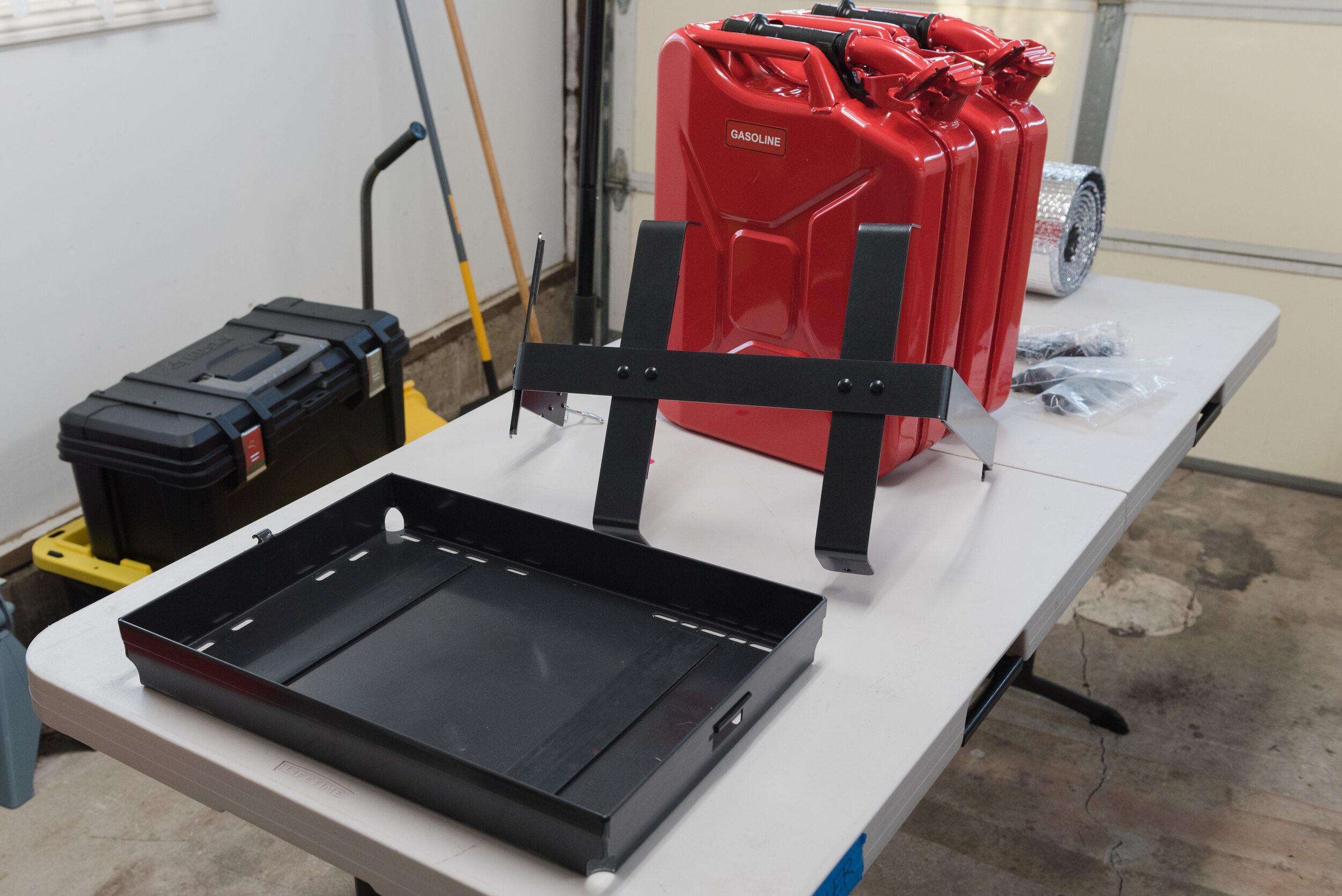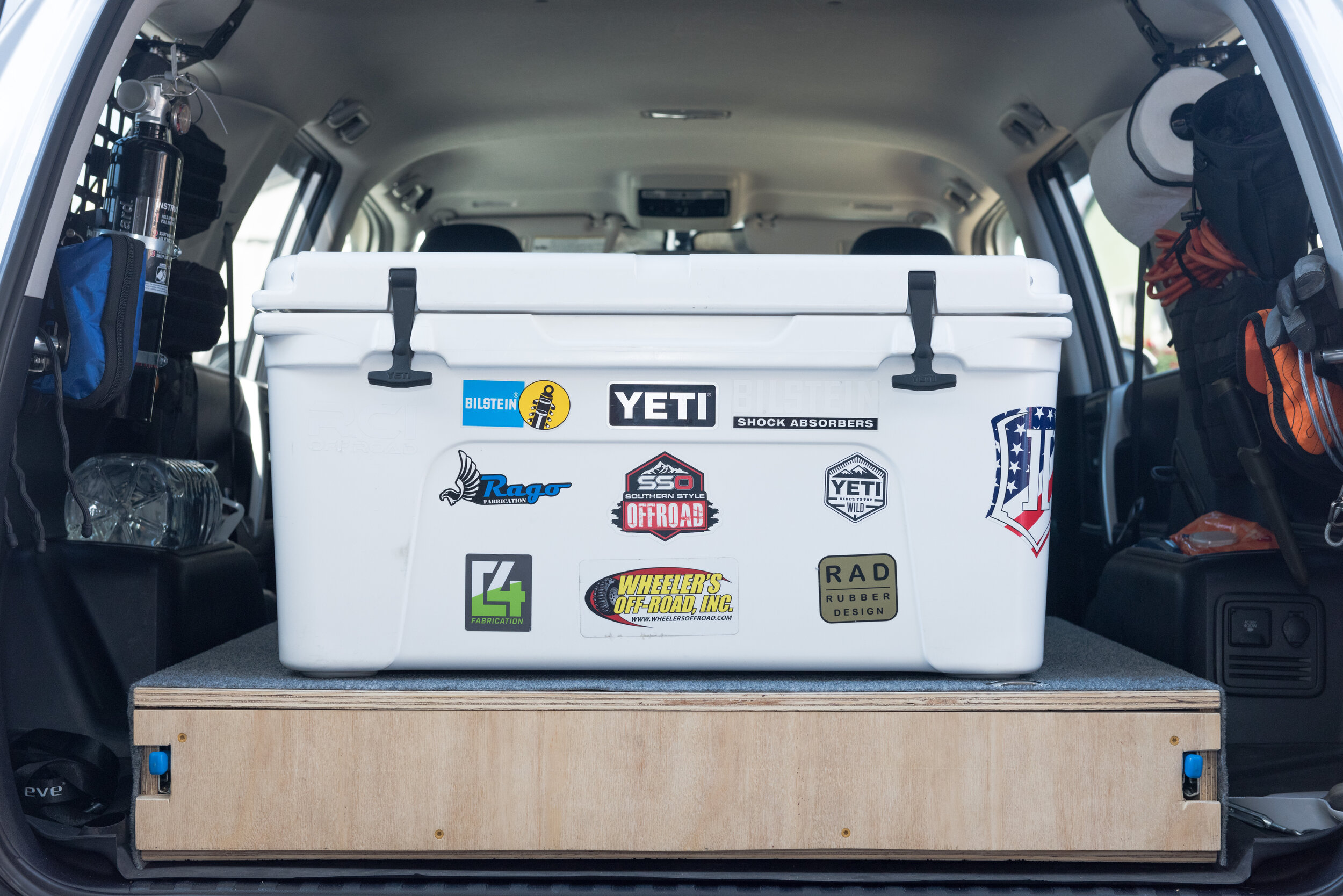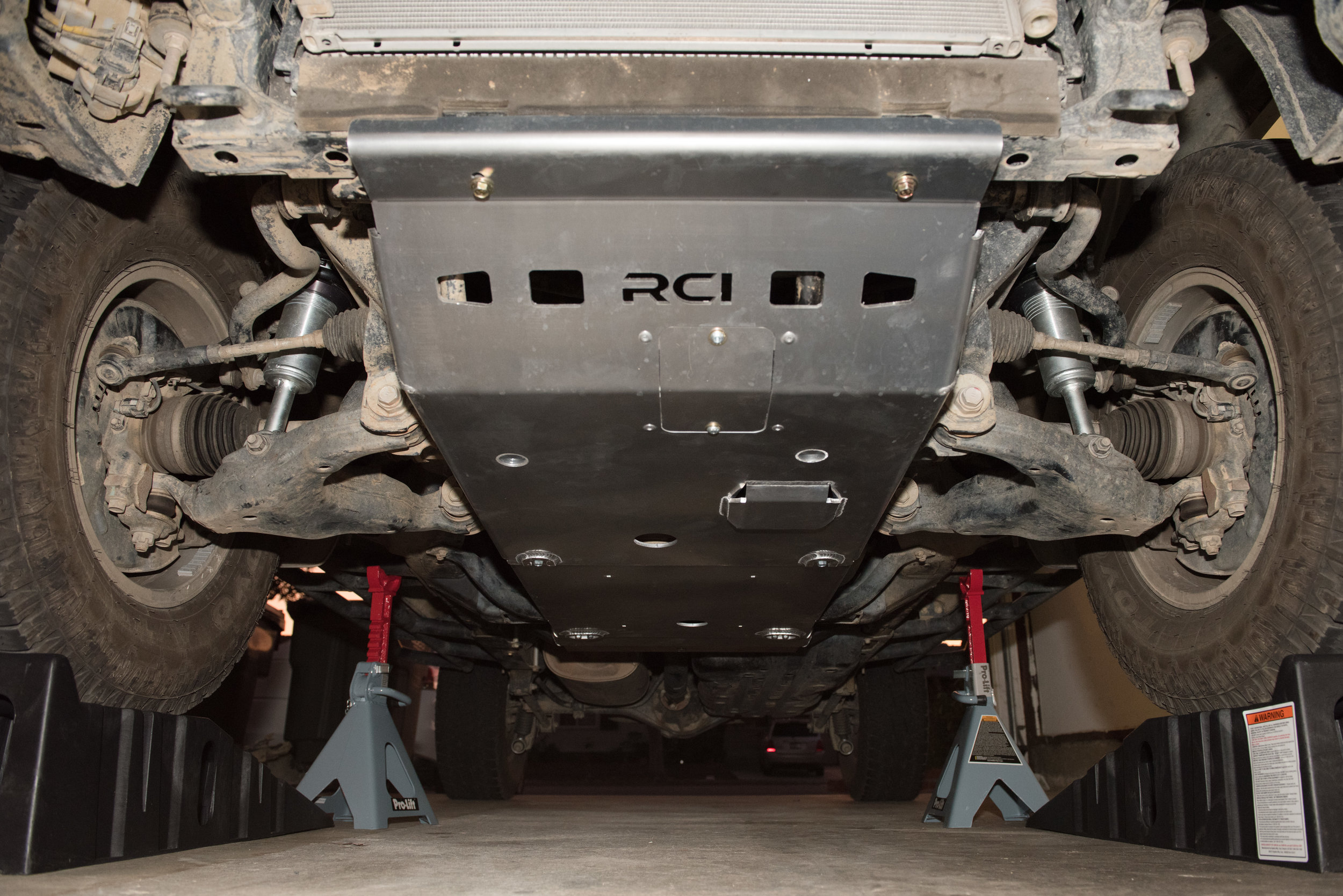As of this post, I am in the middle of installing a 12V fridge/freezer system in the 4Runner. However, I knew running a 12V fridge/freezer on the older stock Panasonic battery would not be ideal given its age and the fact it was not charging past 70% capacity using the stock alternator. So the search began for a new battery!
The following are a few basics to 12V batteries.
Battery Size dictates the physical dimensions of the battery, which when coupled with chemistry and cell types, also dictate the weight of the battery. Battery size is represented by two numbers followed by a letter. The two numbers are based on the physical size of the battery while the letter represents terminal polarity. The most common battery sizes for the 5th Gen 4runner are groups 24F, 27F, 31, and 34R.
One would think the higher the number, the larger the battery or higher the capacity, right? Wrong. I’ll show some numbers later on.Weight is highly dependent on battery chemistry, size, and cell type. A typical group 24F sealed lead-acid battery, such as the OEM Panasonic battery, typically weighs around 50-60 lb. Comparatively, a group 31 AGM battery typically weighs around 75-80 lb; nearly 33% heavier than a group 24F! Weight should always be a consideration when selecting a new battery. When replacing the OEM Panasonic battery with a heavier battery, there will definitely be a slight driver’s side lean. Additionally, there I’ve read reports of group 31 batteries cracking the sheet metal it rests on after hard off-road use - a heavy duty battery tray upgrade may be necessary to prevent this unintended damage (~$200 investment).
Terminal Positions will vary depending on the battery size selected. An R or F in the battery number denotes the terminals are reversed , such that the positive terminal is the negative terminal and vice versa compared to non-lettered sizes (i.e. group 24 vs. group 24F). Different battery sizes will also have different terminal positions (we will not get into terminal sizes). For example, the terminals of group 24F, 27F, and 24F are all near the edge of the battery whereas group 31 batteries are located towards the middle of the battery. Terminal position and polarity will dictate whether or not longer custom terminal extensions are required to connect to your vehicle.
_______Cranking Amps is the maximum current a new fully charged battery can deliver for 30 seconds without dropping down to 7.2V at a specified temperature. Basically, the higher the cranking amps, the easier your engine will turn over. It is generally harder for batteries to provide the same amount of cranking amps in temperate conditions than extreme cold. These specifications are summarized below.
Cold Cranking Amps (CCA) at 0F.
Cranking Amps (CA) or Marine Cranking Amps (MCA) at 32F.
Hot Cranking Amps (HCA) at 80F
Reserve Capacity (RC) is the number of minutes a fully charged battery can deliver a constant current of 25A at 80F without falling below 10.5V. It roughly describes the amount of energy the battery stores while technically specifying charge capacity.
Amp Hours (AH) should not be confused with reserve capacity. A battery’s AH rating is the amount of energy the battery can deliver continuously for 20 hours at 80F without falling below 10.5V. However, a special note is AGM batteries should not be discharged more than 50% of their rated capacity. Exceeding this depth of discharge will drastically reduce overall battery life.
The OEM Panasonic battery is a standard sealed lead-acid battery. I chose to install an Absorbed Glass Mat (AGM), which is a subset/subcategory of sealed lead-acid battery. AGM batteries have better vibration resistance, higher specific power, and better cycle life than the OEM-style battery.
The AGM main batteries I’ve observed recommended on various forums, listed by battery size.
X2Power SLI27FAGMDP: Group 27F, AGM, 930 CCA, 92 AH, 67 lb
Does not fit in stock battery tray. Requires new battery tray, or remove battery tray.
Usable 46 AH.
Odyssey 34R-PC1500T: Group 34R, AGM, 850 CCA, 68 AH, 50 lb
Fits in stock battery tray but requires spacer to raise battery to correct terminal height.
Usable 34 AH
Odyssey 31-PC2150S: Group 31, AGM, 1150 CCA, 100 AH, 78 lb
Does not fit in stock battery tray. Requires new battery tray to secure increased size and weight.
Usable 50 AH
Looking at all these numbers can criss-cross your eyes. What do they all mean? To me, the easiest way to compare these batteries was to compare energy density of each battery listed above.
Group 27F: 1.37 AH/lb
Group 34R: 1.36 AH/lb
Group 31: 1.28 AH/lb
The greatest energy density was clearly the Group 27R battery… even by a small margin. By my estimates, battery should provide about 2 days of 12V refrigerator run-time at approximately 1 AH/h (though this is usually high, depending on the compressor and weather conditions). At 92 AH capacity, or approximately 46 AH of usable capacity before 50% discharge., or 46 hours of run time without starting the vehicle to charge the battery.
The group 27F battery will not fit in the stock battery tray. An alternative swap-in battery tray is that used by Tundra’s/Sequoia’s, which is Toyota PN 74431-0C020, shown below. Don’t buy this from Amazon. Look for OEM parts from dealerships in your area - if you shop online, they usually have dealership discounts. I got it around 50% off from Amazon at a local dealer.
Steps to replace the battery is very straightforward.
Use 11mm open-ended box wrench to loosen and remove negative then positive terminals. Tuck away terminals so they’re not swinging around.
Use 11mm long socket to loosen j-hooks/battery clamp. Remove and set aside.
Replace stock battery tray with new tray.
Place new battery in tray, replace j-hooks/battery clamp, install positive terminal then negative terminal.




























